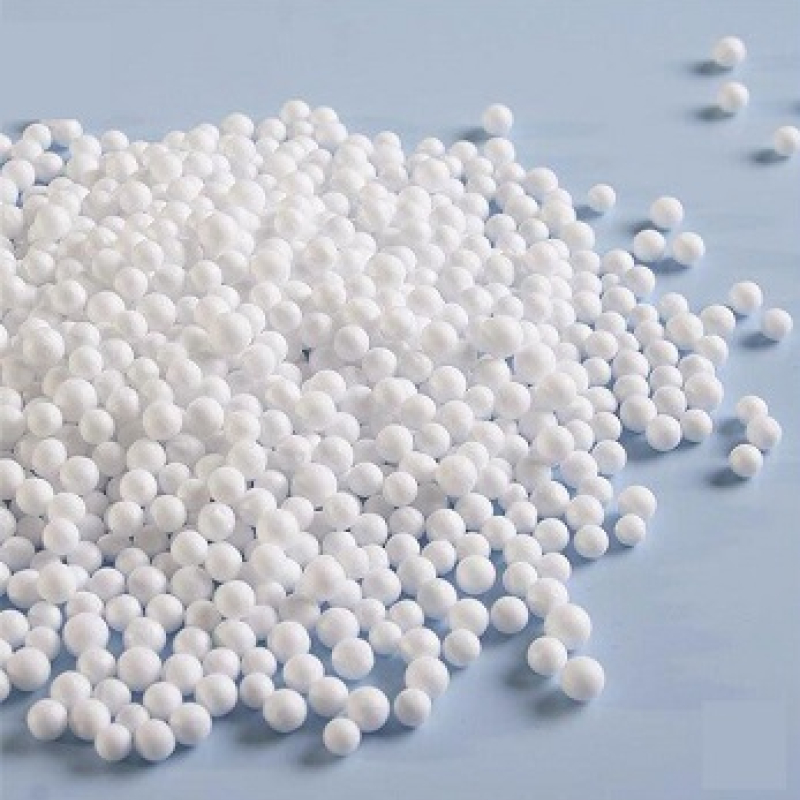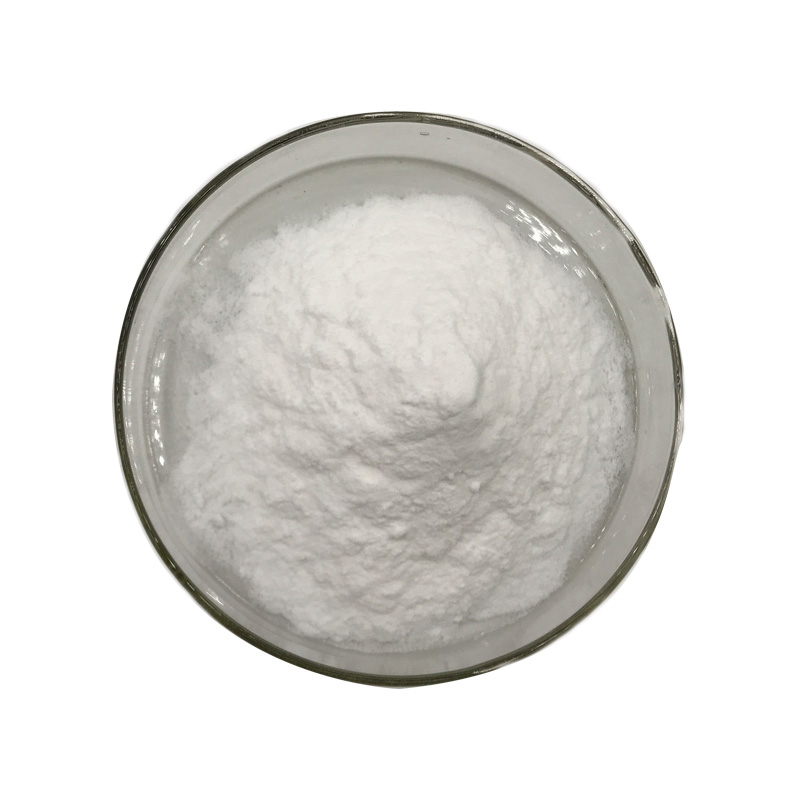Products Description of Glycidol CAS#556-52-5Glycidyl alcohol is also called glycidol. This substance is used as a stabilizer for natural oils and vinyl polymers, demulsifiers, dyeing and layering agents, and is used in surface coatings, chemical synthesis, fungicides, etc.
Contacta ahora
Sodium Methylbenzotriazole CAS#15217-42-2Sodium methylbenzotriazole product uses:Corrosion inhibitor: Mainly used as a rust inhibitor and corrosion inhibitor for metals (such as silver, copper, lead, nickel, zinc, etc.). It can be adsorbed on the metal surface to form a very thin film, preventing corrosive media such as water and oxygen from contacting the metal, thereby protecting the metal from corrosion.
Contacta ahora
Products Description of Calcium Ammonium NitrateCAS#15245-12-2Calcium ammonium nitrate is a nitrogen fertilizer made by melting ammonium nitrate with a certain proportion of limestone and dolomite powder. The ingredients are a mixture of NH4NO3, CaCO3 and MgCO3. Calcium ammonium nitrate contains 21% to 26% nitrogen (N), and is grayish white or light yellow granules or powder. The aqueous solution is weakly alkaline.Calcium ammonium nitrate is the world's most soluble calcium-containing chemical fertilizer.
Contacta ahora
C18H36O CAS#143-28-2 Product Introduction:Meet Pure Oleyl Alcohol, scientifically identified as C18H36O and registered under the CAS#143-28-2. This Light yellow oily liquid is a critical component in a myriad of industries, offering versatility and reliability.
Contacta ahora
Pigment Yellow 34 (CAS#1344-37-2), also known as Lead Chromate, is an inorganic pigment recognized for its vibrant yellow hue.
Contacta ahora
Products Description of Metatitanic acid CAS#12026-28-7Titanic acid is an intermediate product of the sulfuric acid method for producing titanium dioxide.
Contacta ahora
Products Description of Acetic acid CAS#64-19-7Acetic acid, commonly known as acetic acid (AcOH), is named after the main component of vinegar and is one of the most important fatty acids. It generally exists in many plants in free form or in the form of esters in nature. Molecular formula CH3COOH. The brewing and use of vinegar has a history of thousands of years. There are records of vinegar making in ancient China. However, concentrated acetic acid was successfully developed by Stahl in 1700. Pure acetic acid is a colorless liquid with a pungent taste.
Contacta ahora
Acetic acid formula CAS#64-19-7Product Overview:Glacial acetic acid, scientifically known as ethanoic acid, is a colorless, corrosive liquid that plays a pivotal role in various industrial processes. With the chemical formula CH₃COOH and the unique identifier CAS#64-19-7, it is a versatile compound that is widely recognized for its effectiveness in a multitude of applications.Market Relevance:In the dynamic industrial sector, the demand for high-quality chemicals is ever-increasing.
Contacta ahora
Products Description of Kojic acid CAS#501-30-4Kojic acid, also known as kojic acid and kojic acid, is an organic acid with antibacterial effect produced by aerobic fermentation of glucose by Aspergillus candida at 30-32°C. Its molecular structure is a γ-pyrone with a substituent. Among the γ-pyrone compounds existing in nature, the only famous compounds are kojic acid and maltol. In 1907, Saito separated kojic acid crystals from rice koji. It was named by Yabuta in 1912 and its structure was determined in 1924.
Contacta ahora
Products Description of LITHIUM METASILICATE CAS#10102-24-6Lithium silicate is a kind of water-soluble silicate. It is an odorless, tasteless transparent liquid. It is soluble in water and alkaline solutions, but insoluble in alcohols and organic solvents. Since the radius of lithium ions is much smaller than that of sodium and potassium ions, lithium silicate aqueous solution has some unique properties. It reacts chemically with acid like sodium water glass to form dioxide gel.
Contacta ahora
Products Description of Thiabendazole CAS#148-79-8Thiabendazole is commonly known as Tekodo, Tibilin, Thiobendazole, Thiabendazole, and Thiabendazole. It has the ability to conduct systemically to the top, but not to the base. It has a long lasting effect and has cross-resistance with benzimidazole fungicides. It has inhibitory activity against ascomycetes, basidiomycetes, and deuteromycetes, and is used to prevent and control fungal diseases of various crops and preserve fruits and vegetables.
Contacta ahora
Products Description of Thiabendazole CAS#148-79-8Thiabendazole is commonly known as Teketol, Thiabendazole, Thiabendazole, Thiabendazole, and Thiabendazole. It has systemic apical conductivity, but cannot conduct to the base. It has a long lasting effect and has cross-resistance with benzimidazole fungicides. It has inhibitory activity against ascomycetes, basidiomycetes and deuteromycetes and is used to prevent and treat various crop fungal diseases and preserve fruits and vegetables.
Contacta ahora
Products Description of Glycerine CAS#56-81-5Glycerin is an important basic organic raw material. It is widely used in industry, medicine and daily life. Currently, it has about 1,700 uses. It is mainly used in medicine, cosmetics, alkyd resin, tobacco, food, Chemicalbook acid resin, and celluloid. and explosives, textile printing and dyeing, etc. Glycerol consumption in areas such as alkyd resins, celluloids and explosives is on a downward trend. However, its applications in medicine, cosmetics, and food will continue to grow. It can form a nutrient source after hydrolysis in the body.
Contacta ahora
Products Description of AMBERLITE(R) IRA-400 (CL) CAS#9002-24-8717 Strong Base Anion Exchange Resin is a chemical substance.AMBERLITE(R) IRA-400 (CL) Chemical PropertiesWater Solubility Insoluble in water.Merck 14,382Safety InformationRisk Statements 36/37/38Safety Statements 26-36WGK Germany 3TSCA YesProduct Application of AMBERLITE(R) IRA-400 (CL) CAS#9002-24-8Used for softening water, preparing high-purity water, refining radioactive elements, extracting iodine from seaweed, refining antibiotics, industrial wastewater treatment, etc.Factory and Equipm
Contacta ahora
Products Description of ORALITH BRILLIANT PINK R CAS#2379-74-0Reduction of pink red R to thioindigo dyes is mainly achieved by oxidizing unsubstituted or substituted benzo[b]thiophene-3 or naphtho[2,3-b]thiophene using various oxidants such as bromine in a chlorosulfonic acid medium, polysulfides, oxygen in the presence of copper salts, etc.ORALITH BRILLIANT PINK R Chemical PropertiesBoiling point 529.1±50.0 °C(Predicted)density 1.583±0.06 g/cm3(Predicted)storage temp. Sealed in dry,Room Temperatureform SolidColour Index 73360color RedLogP2.06 at 22℃ and pH7E
Contacta ahora
Products Description of Diethylene glycol CAS#111-46-6Diethylene glycol (DEG) is a multifaceted compound with a pivotal role in pharmaceuticals, cosmetics, and textiles. Our firm boasts a robust track record of international collaboration, supplying DEG for applications from liquid medications to skincare formulations and advanced textile dyeing processes. Our R&D arm, in synergy with academic excellence, propels innovation, ensuring our DEG consistently exceeds purity benchmarks, typically at ≥99.9%.
Contacta ahora
Glycerin CAS#56-81-5Introducing our usp 99.7% Glycerine, a high-purity glycerin that is renowned for its exceptional quality and versatility. With the chemical formula C3H8O3, our pure glycerin is a key component in a variety of industries, from cosmetics to food processing.
Contacta ahora
Glycerol CAS#56-81-5Discover the power of Glycerin (CAS#56-81-5), also known as vegetable glycerine or liquid glycerol, a key component in a wide array of industries.
Contacta ahora
Products Description of Dimethyl Disulfide 99.5% MIN CAS#624-92-0Dimethyl disulfide is an organic compound with the chemical formula C2H6S2.Dimethyl disulfide Chemical PropertiesMelting point -85 °CBoiling point 109 °C(lit.)density 1.0625vapor density 3.24 (vs air)vapor pressure 22 mm Hg ( 20 °C)refractive index n20/D 1.525(lit.)FEMA 3536 | DIMETHYL DISULFIDEFp 76 °Fstorage temp. Flammables areasolubility 2.7g/lform LiquidSpecific Gravity1.0647 (20/4℃)color Clear yellowOdorat 0.10 % in propylene glycol.
Contacta ahora
Products Description of Isosorbide dimethyl ether CAS#5306-85-4 Isosorbide dimethyl ether is a colorless oily liquid. It is very stable under neutral conditions, hygroscopic, and miscible with many organic solvents. It is often used as a solvent. DMI can promote the penetration of active ingredients into the epidermis of the skin and give full play to the effectiveness of active ingredients.
Contacta ahora
Petroleum Resins CAS#68131-77-1Petroleum resin is produced by pre-treatment, polymerization, distillation and other processes of C5 and C9 fractions produced as by-products of petroleum cracking.
Contacta ahora
Products Description of Sulfonic acids, petroleum, sodium salts CAS#68608-26-4White powderSulfonic acids, petroleum, sodium salts Chemical PropertiesBoiling point 1042.61℃[at 101 325 Pa]vapor pressure 0Pa at 25℃Water Solubility 0.065ng/L at 25℃LogP22.12 at 25℃EPA Substance Registry SystemPetroleum sulfonic acids, sodium salts (68608-26-4)Factory and Equipment ShowFast delivery timeInventory 2-3 working days New production 7-10 working days
Contacta ahora
Products Description of AMBERLITE(R) XAD-4 CAS#37380-42-0Ion exchange resin is a kind of functional polymer that can exchange with ions of the same sign in aqueous solution. It is essentially a cross-linked polymer acid or polymer base. Phenolic cation exchange resin was first introduced in 1935, and industrial production began in Germany in 1939 and the United States in 1941. After World War II, polystyrene and polyacrylic acid ion exchange resins were put into production one after another. After the 1960s, macroporous ion exchange resins were developed.
Contacta ahora
Veg glycerin CAS#56-81-5Product Description:Discover the versatility and purity of our Vegetable Glycerin (CAS#56-81-5), a natural and biodegradable alternative to petroleum-based glycerin.
Contacta ahora



































